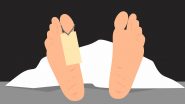Washington [US], April 13 (ANI): According to a meta-analysis published in the online issue of Neurology, the medical journal of the American Academy of Neurology, both cluster headache and migraine have strong links to the circadian system, the internal clock that regulates body processes.
The meta-analysis included all available studies on cluster headache and migraine that included circadian features. This included information on the timing of headaches during the day and during the year as well as studies on whether genes associated with the circadian clock are more common in people with these headaches.
The researchers also looked at studies on cluster headache and migraine and hormones related to the circadian system, including cortisol and melatonin.
"The data suggest that both of these headache disorders are highly circadian at multiple levels, especially cluster headache," said study author Mark Joseph Burish, MD, PhD, of the University of Texas Health Science Center at Houston in Texas and a member of the American Academy of Neurology. "This reinforces the importance of the hypothalamus -- the area of the brain that houses the primary biological clock -- and its role in cluster headache and migraine. It also raises the question of the genetics of triggers such as sleep changes that are known triggers for migraine and are cues for the body's circadian rhythm."
For cluster headache, the meta-analysis found a circadian pattern of headache attacks in 71% of people. Attacks peaked in the late hours of the night to early hours of the morning. During the year, people had more attacks in the spring and fall. On the genetic level, cluster headache was associated with two main circadian genes, and five of the nine genes that increase the likelihood of having cluster headache are genes with a circadian pattern of expression.
People with cluster headache also had higher cortisol levels and lower melatonin levels than people without cluster headache.
For migraine, the meta-analysis showed a circadian pattern of attacks in 50% of people. While the peak for attacks during the day was broad, ranging from late morning until early evening, there was a circadian low point during the night when few attacks happened. Migraine was also associated with two core circadian genes, and 110 of the 168 genes associated with migraine were genes with a circadian pattern of expression.
People with migraine had lower levels of melatonin in their urine than people without migraine. In addition, melatonin levels were lower during a migraine attack.
"These results raise the potential for using circadian-based treatments for headache disorders," Burish said. "This could include both treatments based on the circadian rhythm -- such as taking medications at certain times of the day -- and treatments that cause circadian changes, which certain medications can do."
A limitation of the study was that researchers did not have information on factors that could influence the circadian cycle, such as medications, other disorders such as bipolar disorder or circadian rhythm issues such as night shift work.
The study was supported by the Will Erwin Headache Research Foundation. (ANI)
(This is an unedited and auto-generated story from Syndicated News feed, LatestLY Staff may not have modified or edited the content body)













 Quickly
Quickly

















